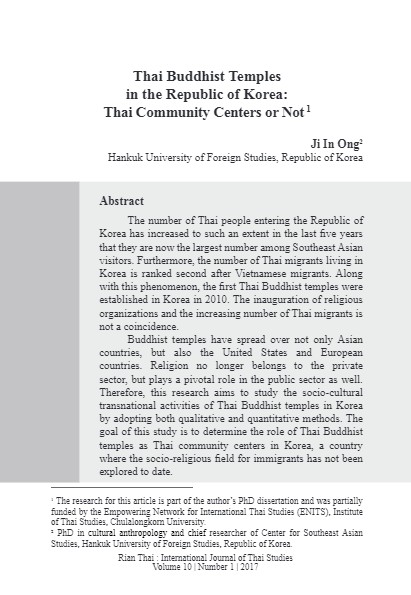Ji In Ong
Abstract
The number of Thai people entering the Republic of Korea has increased to such an extent in the last five years that they are now the largest number among Southeast Asian visitors. Furthermore, the number of Thai migrants living in Korea is ranked second after Vietnamese migrants. Along with this phenomenon, the first Thai Buddhist temples were established in Korea in 2010. The inauguration of religious organizations and the increasing number of Thai migrants is not a coincidence. Buddhist temples have spread over not only Asian countries, but also the United States and European countries. Religion no longer belongs to the private sector, but plays a pivotal role in the public sector as well.
Therefore, this research aims to study the socio-cultural transnational activities of Thai Buddhist temples in Korea by adopting both qualitative and quantitative methods. The goal of this study is to determine the role of Thai Buddhist temples as Thai community centers in Korea, a country where the socio-religious field for immigrants has not been explored to date.
The results of this study reveal that Thai Buddhist temples in Korea conduct roles to inherit national identity and also can serve as intermediaries between Korea and Thailand; however, these temples do not serve as social fields providing better social capital. Furthermore, they are not community centers where Thai immigrants interchange useful information about living in Korea.
(Published in Rian Thai: International Journal of Thai Studies, Volume 10/2017 (Number 1), Page 27-54)
Full Text : Download
